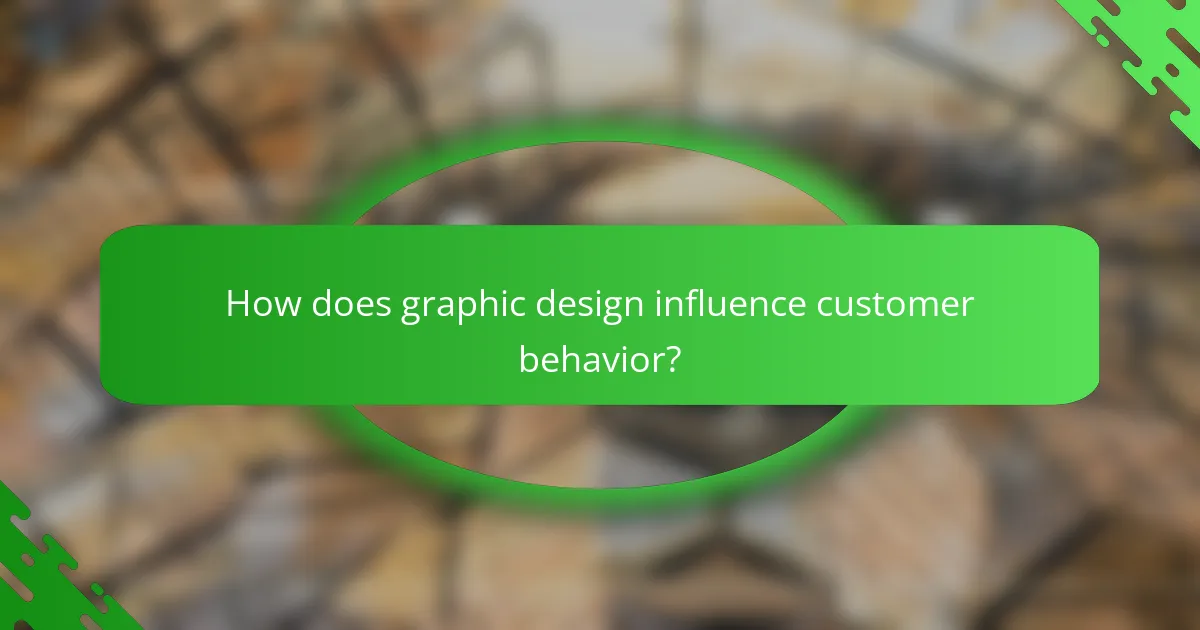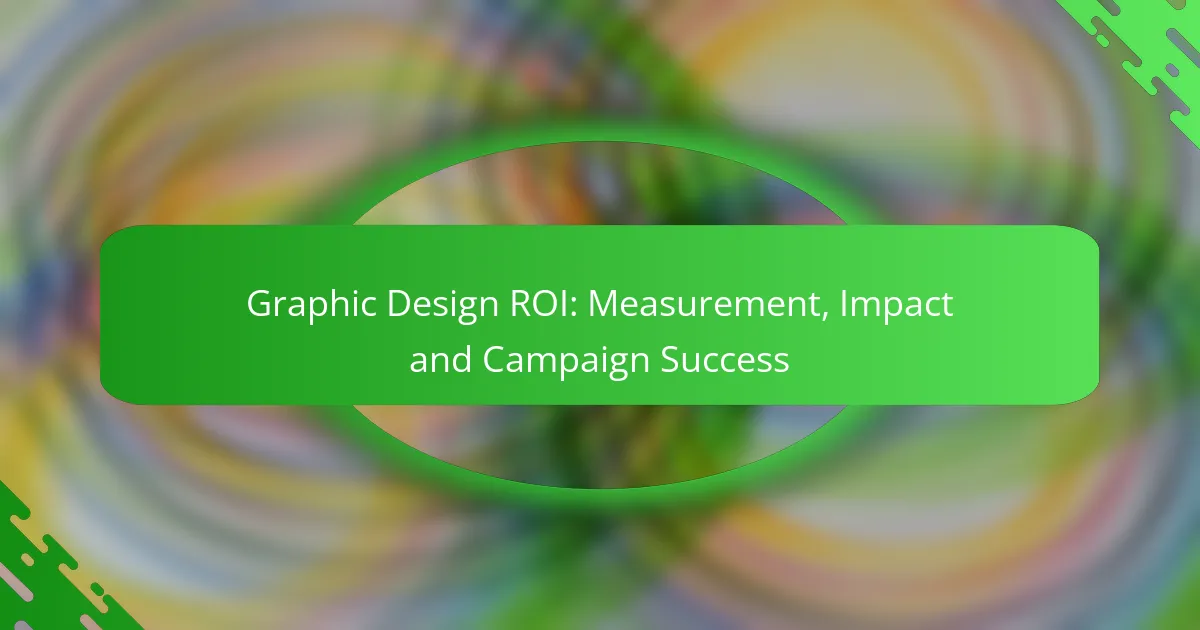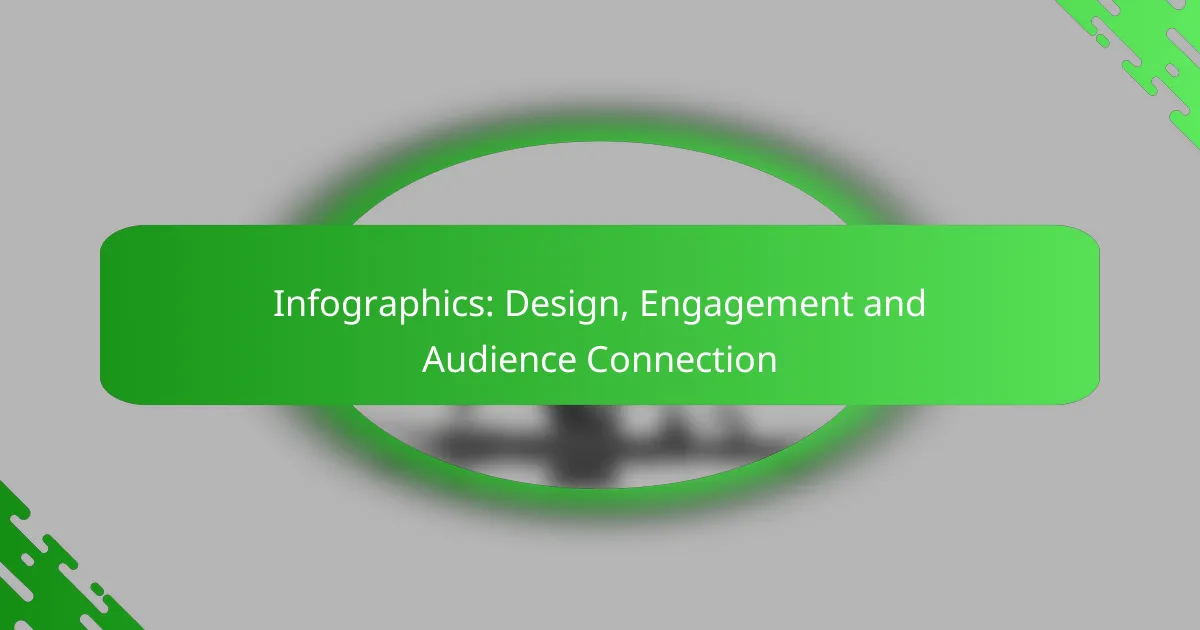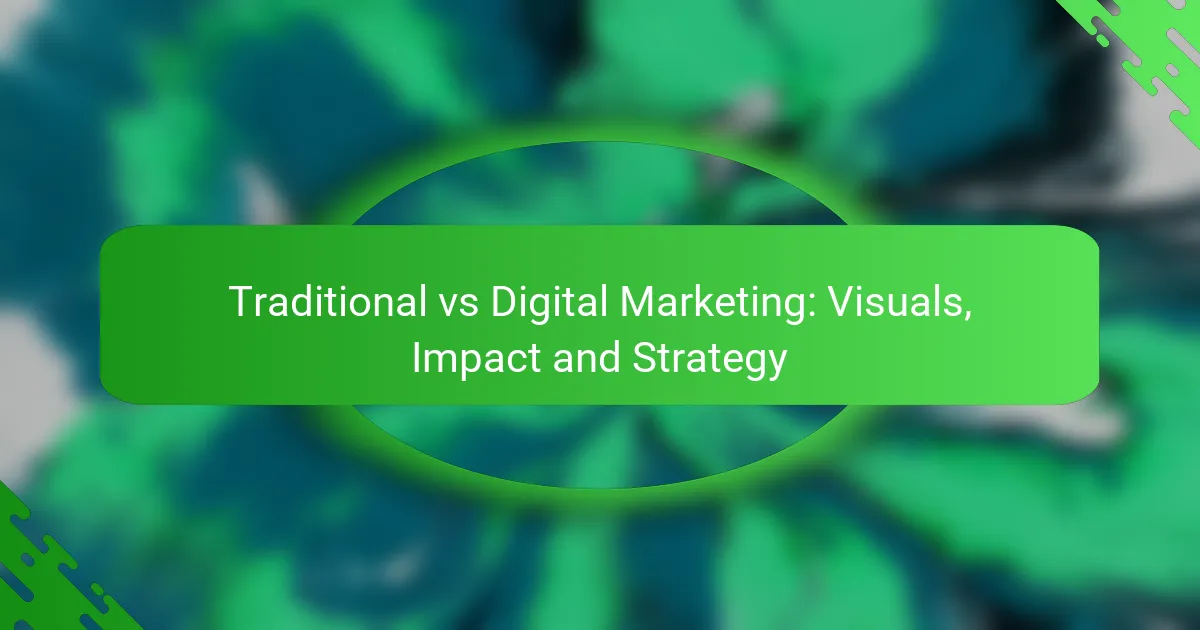Measuring the return on investment (ROI) of graphic design is crucial for businesses seeking to understand the financial benefits of their design expenditures. By evaluating the impact of design on campaign success, companies can enhance audience engagement and drive desired actions, ultimately leading to improved profitability. Key metrics such as customer acquisition cost and return on ad spend provide valuable insights into the effectiveness of design efforts in achieving marketing goals.

How to measure graphic design ROI effectively?
Measuring graphic design ROI involves evaluating the financial return generated from design investments against the costs incurred. This process helps businesses understand the impact of their design efforts on overall performance and profitability.
Utilizing analytics tools
Analytics tools are essential for tracking the effectiveness of graphic design. Platforms like Google Analytics can provide insights into user behavior, conversion rates, and traffic sources, allowing you to assess how design elements influence customer actions.
Consider integrating tools that offer heatmaps or user session recordings, which can visually demonstrate how users interact with your designs. This data can guide future design decisions and improvements.
Setting clear KPIs
Establishing clear Key Performance Indicators (KPIs) is crucial for measuring graphic design ROI. KPIs might include metrics such as conversion rates, customer acquisition costs, or brand awareness levels.
Define specific, measurable goals related to your design projects. For example, aim for a specific percentage increase in conversions following a redesign, which can help quantify the design’s effectiveness.
Conducting A/B testing
A/B testing allows you to compare two design variations to determine which performs better. By presenting different designs to similar audience segments, you can gather data on user preferences and behaviors.
Implement tests on key elements like call-to-action buttons or layout changes. A/B testing can reveal insights that lead to improved engagement and higher conversion rates, ultimately enhancing ROI.
Tracking customer engagement
Monitoring customer engagement is vital for assessing the impact of graphic design. Engagement metrics such as time spent on page, bounce rates, and social media shares can indicate how well your designs resonate with audiences.
Utilize tools that track these metrics over time to identify trends and patterns. High engagement levels often correlate with effective design, suggesting that your investment is yielding positive returns.

What is the impact of graphic design on campaign success?
The impact of graphic design on campaign success is significant, as it shapes audience perception and engagement. Effective design can enhance visibility, convey messages clearly, and ultimately drive desired actions from potential customers.
Increased brand recognition
Graphic design plays a crucial role in increasing brand recognition by creating a consistent visual identity. Elements like logos, color schemes, and typography help consumers easily identify and remember a brand, leading to stronger market presence.
For example, companies that maintain uniform branding across all platforms—such as websites, social media, and advertisements—can improve recall rates by up to 80%. This consistency fosters familiarity, making it more likely for consumers to choose that brand over competitors.
Enhanced customer trust
High-quality graphic design enhances customer trust by projecting professionalism and attention to detail. A well-designed campaign can signal to potential customers that a brand values quality and is reliable.
Research indicates that consumers are more likely to engage with brands that present themselves professionally. Simple design elements, such as clear layouts and high-resolution images, can significantly influence perceptions of credibility and trustworthiness.
Higher conversion rates
Effective graphic design can lead to higher conversion rates by guiding users through a clear and visually appealing path to action. Elements such as call-to-action buttons, attractive visuals, and intuitive layouts can significantly impact user behavior.
For instance, A/B testing different design elements on landing pages has shown that small changes, like button color or image placement, can increase conversion rates by 20% or more. Prioritizing user experience through thoughtful design is essential for maximizing campaign effectiveness.

Which metrics indicate graphic design effectiveness?
Key metrics that indicate graphic design effectiveness include customer acquisition cost, return on ad spend, and engagement rates. These metrics help businesses evaluate the impact of their design efforts on overall marketing success and profitability.
Customer acquisition cost
Customer acquisition cost (CAC) measures the total cost of acquiring a new customer, including marketing and design expenses. A lower CAC indicates that your graphic design is effectively attracting and converting potential customers.
To calculate CAC, divide total marketing costs by the number of new customers acquired in a specific period. For instance, if you spent $5,000 on marketing and gained 100 new customers, your CAC would be $50. Aim for a CAC that is sustainable relative to the lifetime value of your customers.
Return on ad spend
Return on ad spend (ROAS) evaluates the revenue generated for every dollar spent on advertising, including design costs. A higher ROAS signifies that your graphic design is contributing positively to your advertising efforts.
To calculate ROAS, divide the total revenue from a campaign by the total ad spend. For example, if you earned $10,000 from a campaign that cost $2,000, your ROAS would be 5:1. Aiming for a ROAS of at least 4:1 is often considered a good benchmark.
Engagement rates
Engagement rates measure how effectively your graphic design captures audience attention and encourages interaction. Higher engagement rates indicate that your design resonates well with your target audience.
Common metrics for engagement include likes, shares, comments, and click-through rates. For example, if a social media post receives 200 likes and 50 shares from 1,000 views, the engagement rate would be 25%. Strive to improve engagement by testing different design elements, such as colors, layouts, and calls to action.

How does graphic design influence customer behavior?
Graphic design significantly impacts customer behavior by shaping perceptions and emotions toward a brand. Effective visuals can create strong connections, influence purchasing decisions, and enhance user experiences, ultimately driving engagement and sales.
Emotional connection through visuals
Visual elements in graphic design evoke emotions that can resonate with customers on a personal level. Colors, typography, and imagery work together to create a brand identity that customers can relate to, fostering loyalty and trust.
For instance, a brand using warm colors may evoke feelings of comfort and happiness, while cooler tones might convey professionalism and calmness. Understanding the psychology of color can help designers create visuals that align with the desired emotional response.
Influence on purchasing decisions
Graphic design plays a crucial role in guiding customers through the purchasing journey. Well-designed product images, promotional graphics, and clear calls to action can significantly enhance the likelihood of a purchase.
Research suggests that high-quality visuals can increase conversion rates by a notable margin. Brands should focus on creating compelling visuals that highlight product benefits and features, making it easier for customers to make informed decisions.
Impact on user experience
A well-executed graphic design improves user experience by making information accessible and engaging. Intuitive layouts, readable fonts, and cohesive branding help users navigate websites and applications more efficiently.
For example, a clean and organized interface reduces cognitive load, allowing users to find what they need quickly. Designers should prioritize usability alongside aesthetics to ensure that visual elements enhance rather than hinder the overall experience.

What are the best practices for optimizing graphic design ROI?
To optimize graphic design ROI, focus on aligning design efforts with business objectives, investing in high-quality resources, and regularly updating design elements. These practices ensure that design not only enhances visual appeal but also drives measurable business results.
Aligning design with business goals
Aligning graphic design with business goals is crucial for maximizing ROI. Start by identifying key performance indicators (KPIs) that reflect your business objectives, such as increased sales, brand awareness, or customer engagement. Ensure that every design project directly supports these goals.
For instance, if your goal is to boost online sales, your design should focus on creating compelling product images and clear calls to action. Regularly review and adjust your design strategies based on performance metrics to maintain alignment with evolving business goals.
Investing in quality design resources
Investing in quality design resources can significantly enhance the effectiveness of your graphic design efforts. This includes hiring skilled designers, utilizing professional design software, and sourcing high-quality images and graphics. Quality resources lead to more polished and impactful designs that resonate with your audience.
Consider allocating a budget specifically for design resources, which may range from a few hundred to several thousand dollars depending on the scale of your projects. Avoid cutting corners on design, as poor-quality visuals can harm your brand’s reputation and reduce overall ROI.
Regularly updating design elements
Regularly updating design elements is essential to keep your brand fresh and relevant. Trends in graphic design evolve quickly, and what was once appealing may become outdated. Schedule periodic reviews of your design assets to identify areas that need refreshing or improvement.
For example, updating your logo, color scheme, or website layout every few years can help maintain consumer interest and engagement. Additionally, consider seasonal updates for promotional materials to reflect current trends and themes, which can enhance customer connection and drive sales.

What frameworks help in evaluating design effectiveness?
Several frameworks assist in evaluating the effectiveness of design by providing structured approaches to measure impact and success. These methodologies focus on user experience, feedback, and measurable outcomes to ensure that design efforts yield positive returns on investment.
Design thinking methodology
The design thinking methodology is a user-centered approach that emphasizes understanding the needs and experiences of users. It typically involves five phases: empathize, define, ideate, prototype, and test. This iterative process allows designers to refine their solutions based on real user feedback.
Key considerations in design thinking include engaging with users throughout the design process and being open to revising ideas based on testing outcomes. For example, a company might create several prototypes of a product and gather user feedback to determine which design resonates best before finalizing the product.
To effectively implement design thinking, teams should prioritize collaboration and maintain flexibility. Common pitfalls include rushing through the testing phase or neglecting user input, which can lead to designs that do not meet user needs. Regularly revisiting user feedback can help avoid these issues and enhance design effectiveness.



